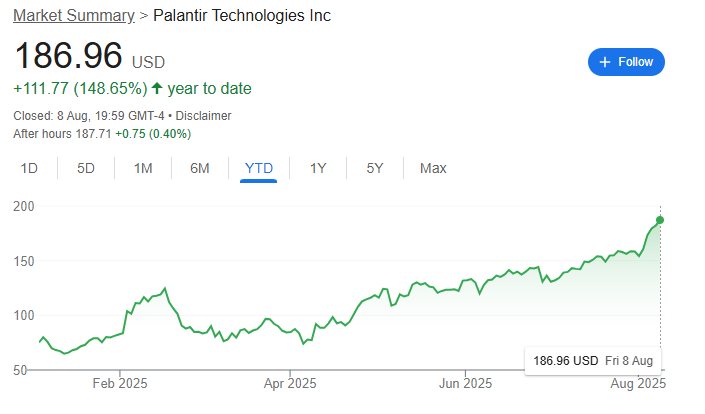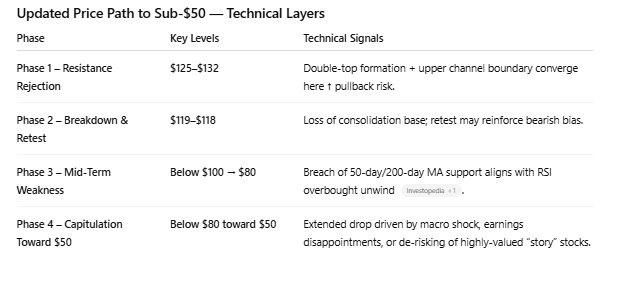Palantir’s (NYSE: PLTR) share price shows no signs of slowing, but concerns persist over its high valuation.
While the stock eyes the $200 mark, bears warn it could fall below $100, and even toward $50, if future targets are missed.
Notably, Palantir closed last trading session at $186.96, up over 2%, and is up nearly 150% year-to-date.

Indeed, the latest rally has been fueled by strong Q2 2025 earnings, with revenue surpassing $1 billion for the first time and full-year guidance raised. Adjusted EPS came in at $0.16 compared to $0.14 expected, while revenue grew 48% year-over-year to $1 billion, beating the $940 million consensus.
Odds of PLTR stock dropping below $50
Regarding the possibility of the stock falling to $50, Finbold consulted OpenAI’s latest and most advanced artificial intelligence model, ChatGPT-5, for insights into a possible correction.
ChatGPT-5 estimated a 30% to 35% chance that Palantir’s share price could fall below $50 within the next 18 to 24 months.
The AI model noted that Palantir trades at “an extremely high multiple relative to earnings,” leaving it vulnerable to sharp valuation drops if growth lags.
In this line, high interest rates or shifting sentiment toward tech could hit richly valued stocks hard, and history shows similar high-growth names have seen drawdowns of up to 80%.
However, strong AI momentum, long-term government contracts, and a loyal customer base offer revenue stability. At the same time, the model stressed that the “story stock” premium could vanish quickly if sentiment turns.
Key PLTR stock price levels to watch
Furthermore, ChatGPT outlined a possible four-phase drop to sub-$50. In this line, a breakdown from recent highs on an earnings miss or weak guidance, falling below $160 support; a broader tech correction with high rates pushing it to the $120 and $130 “valuation reset” zone; slowing contract growth and a shift to value stocks taking it under $100; and a final macro or sentiment shock driving capitulation to $45–$50.

Key catalysts for a sharper decline include sustained high interest rates, revenue growth slipping below 20% year-over-year, rising competition from big tech, and waning investor appetite for steep valuation multiples without hyper-growth.
The AI tool noted that a clear break below $160 would be the first warning sign, with further technical and fundamental weakness paving the path toward sub-$50 levels.
Featured image via Shutterstock







